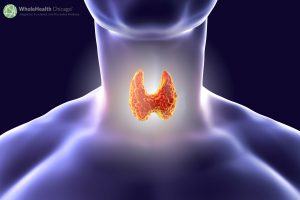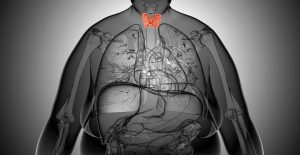Two thyroid facts worth knowing: You’ve shown up for your usual ten minute, quick glance billed to your insurer as an in-depth primary care office visit. You’re allowed to talk about one problem only, and so you present the symptoms of hypothyroidism every doctor and nurse practitioner should be able to recite in their sleep. […]
Tag: thyroid disease
Root Causes of Chronic Fatigue, Part 2: Minimally Underactive Thyroid
I went to medical school in London for a while and truly it was great fun. This was the 1960s–Beatles, Stones, Carnaby Street–and if you were going to be anywhere on the planet, central London was it. The newly released thriller “Last Night in Soho” really captures the atmosphere. Middlesex, my assigned hospital, was located […]
Zinc/Copper
The minerals zinc and copper can be purchased as single products, but there’s good reason to consider a combination product that pairs the two.
Zinc blocks the absorption and enhances the excretion of copper when taken over time. So, when zinc is recommended long term (over many months) for any condition–from arthritis to prostate problems or even Alzheimer’s–it’s important to get some copper as well. A combination product will help prevent a copper deficiency and the anemia that can develop as a result.
Vitamin C
In the eighteenth century, seasoned sailors found that by sucking on lemons they could avoid scurvy, a debilitating disease that often developed during long voyages when fresh fruits and vegetables were scarce. When the lemon’s key nutrient was formally identified in 1928, it was named ascorbic acid for its anti-scurvy, or antiscorbutic, action. Today ascorbic acid is widely known as vitamin C.
Vitamin A
This famed vision-enhancing nutrient was isolated in 1930, the first fat-soluble vitamin to be discovered. The body acquires some of its vitamin A through animal fats. The rest it synthesizes in the intestines from the beta-carotene and other carotenoids abundant in many fruits and vegetables.
Spirulina and Kelp
For thousands of years, traditional healers in China and other parts of the world have looked to the water for healing remedies. Spirulina and kelp were two key finds.
Spirulina is a small, single-celled microorganism that’s rich in chlorophyll, a plant pigment that gives so many lakes and ponds their dark blue-green color. Kelp, in contrast, is a brown algae that grows only in the sea. The name refers to any of the numerous long-stemmed seaweeds that belong to the order Laminariales or Fucales.
Forskolin
In India, practitioners of traditional Ayurvedic medicine have long used the herb Coleus forskohlii to treat asthma, heart disease, and a range of other ailments. The small mint-family herb is also found in Sri Lanka, Thailand, and Nepal.
Amino Acids
The body uses chemical substances called amino acids to build the exact type of protein it needs. There are two types: essential and nonessential. While the body must get the essential amino acids from foods, it can manufacture the nonessential amino acids on its own if the diet is lacking in them.

